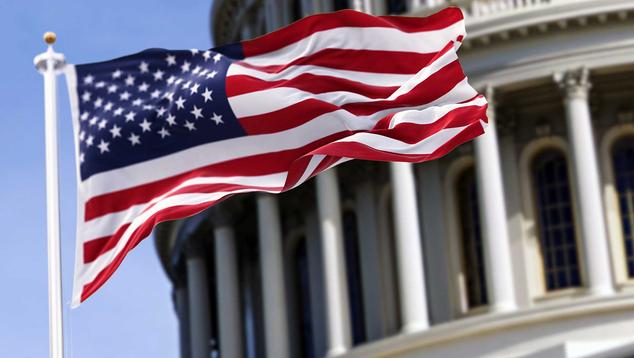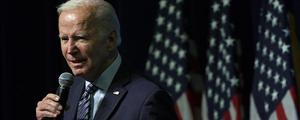Story Highlights
- 47% trust the judicial branch, 43% the executive, 38% the legislative
- Trust in judicial branch at record low; executive near low
- More trust in state, local governments
WASHINGTON, D.C. -- Americans continue to lack faith in the federal government, with low levels of trust in all three branches. Gallup previously reported that trust in the judicial branch of the federal government has cratered in the past two years; it now sits at 47%, below the majority level for the first time in Gallup's polling history. At 43%, trust in the executive branch is just three percentage points above its record low from the Watergate era. Americans are even less trusting in the legislative branch, at 38%, but this figure has been as low as 28% in the past.
As recently as 2005, all three branches were trusted by majorities of Americans. And when Gallup first measured federal trust in 1972, no fewer than two-thirds trusted in each branch of the government.
The latest results are part of Gallup's annual Governance survey, conducted Sept. 1-16. Americans have been lacking trust in the three branches for over a decade. Trust levels in the executive and legislative branches are similar to a year ago, but there has been a decline in trust in the judicial branch, likely tied to recent controversial rulings by the U.S. Supreme Court.
Trust in the legislative branch has consistently been the lowest of the three branches since 2009 and has been no higher than 40% since 2010, including the record-low 28% in 2014. Americans' trust in the executive branch has mainly been below 50% since 2006, except for several measures during the Barack Obama presidency, including a spike to 61% his first year in office in 2009.
In addition to the earlier in-depth report on declines in trust in the federal judicial branch, Gallup also recently reported that trust in the federal government's ability to handle domestic and international problems remains low.
The poll finds Americans are much more trusting in their state (57%) and local (67%) governments than in any branch of the federal government. Trust in state and local governments has been more stable historically than trust in the three federal branches.
While state and local trust levels are currently below their historical averages of 63% and 70%, respectively, they are only slightly so.
Trust in All Three Federal Branches Varies Sharply by Political Party
Trust in federal government branches is largely influenced by the match between a person's political party identification and the controlling party of the institution. Democrats are currently far more likely than Republicans to trust the executive and legislative branches, given that Joe Biden is president and the Democratic Party controls both houses of Congress. But Republicans are far more likely than Democrats to trust the Supreme Court, which currently has six justices appointed by Republican presidents and three appointed by Democrats.
Party gaps are greatest in views of the executive branch, with nearly 80 points separating Democratic and Republican trust. Although the party divisions in trust in the legislative and judicial branches are comparatively small, the 42-point gap in ratings of the judicial branch is the largest Gallup has measured, and the 29-point gap in ratings of the legislative branch is four points below the 2009 record.
By contrast, there are minor party gaps in the ratings of state and local governments.
The small gap in trust in state government obscures partisan differences tied to the party of the governor of a state and the respondent's own party identification. On average, a combined 79% of Republicans and Democrats living in a state with a governor from their own party have a great deal or fair amount of trust in their state government. Among Republicans and Democrats living in states where the governor is from the opposite party, trust in state government is at 32%.
Trust in Executive Branch Increasingly Partisan
Declining trust in the executive branch since 2006 is largely attributable to a drop among independents during George W. Bush's second term in office and an ongoing decline in trust among those who identify with the opposition party to the president.
Compared with Bush's first term, trust in the executive branch fell 22 points among independents (from 59% to 37%) and 18 points among Democrats (from 37% to 19%). His job approval ratings averaged 37% during his second term in office as his administration dealt with the prolonged war in Iraq, the Hurricane Katrina disaster, soaring gas prices and a declining economy.
During Obama's first term, trust among independents rebounded to an average of 47%. It has generally dwindled since, though it has yet to match the lower level seen during Bush's second term.
But trust among those who identify with the opposition party to the president -- Republicans during Obama's two terms, Democrats during the Donald Trump administration and Republicans now in Biden's term -- has continued to decline, falling to single digits under both Trump and Biden. During Bill Clinton's second term and Bush's first, an average of 39% of the president's political opponents said they trusted the executive branch.
At the same time that independents and opponents of the president have lost trust in the executive branch, supporters of the incumbent president's party have maintained very high levels of trust. Since the late 1990s, more than eight in 10 of those who align with the president's party have consistently expressed trust in the executive branch.
The increasing link between partisanship and trust in the executive branch is similar to what Gallup has documented in presidential job approval ratings.
Trust in the legislative branch has shown a different pattern over time. From the early 2000s to the end of the Obama administration, all party groups -- including the incumbent president's supporters, his opponents and political independents -- generally showed declines in trust. Trust levels remained stable during the Trump administration.
The pattern has been disrupted in the Biden years, with Democrats' trust in the legislative branch increasing sharply as the president has been able to work with a Democratic Congress during his first two years in office. Independents' trust has held steady the past two years, while Republicans' lower trust has fueled a further drop among the opposition party.
Bottom Line
The latest decline in Americans' trust in the judicial branch of the federal government -- to 47% -- means this is the first time that none of the three branches is trusted by a majority of Americans. The average level of trust in the three branches is 43% this year, tying 2015 as the lowest in Gallup's history. That year marked the previous low in trust in the judicial branch (53%); trust in the legislative branch (32%) was lower than it is now, while trust in the executive branch (45%) was similar to what it is today.
Americans continue to name the government as the most important problem facing the country as leaders in Washington struggle to find solutions to address inflation, illegal immigration, climate change and gun violence.
The erosion of trust is largely due to increasingly partisan evaluations of government institutions at a time when politics has become all-important. Republicans and Democrats are inclined to trust institutions when they are controlled by leaders they agree with but withhold trust when leaders don't make decisions in line with their own political views or policy preferences. In a democratic society, Americans would ideally retain trust in their government institutions regardless of which party is in control, provided those leaders put the nation's interests first and follow the Constitution, laws, procedures and norms that govern the operation of those institutions. The ideal may not be realistic, but the country -- including its political leaders and the people they represent -- was closer to it in the past than it is now, given the higher trust in government that existed then.
To stay up to date with the latest Gallup News insights and updates, follow us on Twitter.
Learn more about how the Gallup Poll Social Series works.




